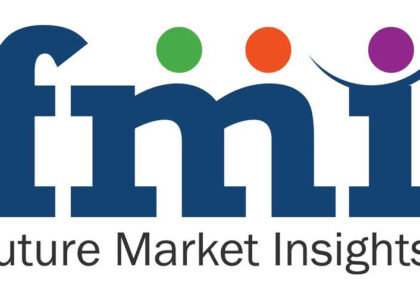Betanin Food Color Market analysis by Future Market Insights tells that the market is expected to reach a market valuation of nearly US$ 91 million by the year 2022, and thereafter accelerating with a CAGR of 4.7% between 2022-2032.
Large-scale food manufacturing corporations are moving their focus on adding powdered betanin to their final product in order to promote the health profile of food products, in an attempt to cope with the changing consumer preferences. One such trend observed is in the soups, sauces, and dressings industry where beetroot red is added in the dry sauce mix packs.
Other common uses of betanins also include coloring ice creams, confectionery, and beverages. Betanin is also used for coloring meats and sausages. Betanin or beetroot red is a vibrant red-colored pigment that is used as a food dye naturally obtained from a plant. Beetroots or other raw plants are strained, diffused, or pressed at a low pH to produce water-soluble betanin.
Request for Report Sample
https://www.futuremarketinsights.com/reports/sample/rep-gb-14839
Increasing in the consumption of different organic end-use products, increase in the investment of huge amounts of money to set up food and beverage manufacturing and sales facilities, rise in the population, increase in the disposable income, and increase in the demand of betanin in developed and developing countries are driving the betanin food colors market.
Key Takeaways from Market Report
- The overall natural food colors market is expected to expand at a CAGR of 5% in North America through 2032, while the betanin food colors market is anticipated to grow at a rate of 5.7% in the region.
- The European betanin food colors market is currently pegged at 1550 metric tons by volume and USD 22 mn by value. The demand for beetroot red is about to grow at 3% CAGR between 2022 and 2032 in this region.
- By application, the beverages industry consumed over 1505 metric tons of beetroot red colorant in 2021 and was valued at USD 22.6 mn, which is approximately 25% of the annual Betanin food color sales.
- In relation to synthetic colorants like Azorubine, Allura Red, and others, betanin has lesser stability, which is a major restraining factor for market Another problem impeding the market’s desired growth is the higher product cost when compared to its competitors.
- Being a purely plant-based food colorant, pressed naturally from beets, no stringent regulations have been made around betanin food colors helping the market operate freely. Growing consumer preference for organic, healthy, and nutritious plant-derived food products is the main factor pushing the sales of betanin food colors across global markets.
Get a Customized Scope to Match Your Need Ask an Expert
https://www.futuremarketinsights.com/ask-question/rep-gb-14839
“Betanin food color producers should target the health and nutrition markets like dietary supplements industry as it complements with the value natural colorant like beetroot red offers. Manufacturers should also achieve economies of scale, to make plant-based food colors more affordable to food processing industries. The market is yet fragmented and hence regional players should establish alliances with other regional players and international food brands in order to scale the revenue,” says a Future Market Insights analyst.
Competitive Landscape
The Betanin food colors market is highly fragmented with several regional players operating. Market players leading the Betanin food colors market are Sensient Technology Corporation, Symrise A.G., Kanegrade Ltd., Merck & Co. Inc., Chr. Hansen Holding A/S, Kalsec Inc, Hunan Nutramax Inc., Nanjing Zelang Medical Technology Co. Ltd., Calyxt Inc., Kingherbs Limited, JF Natural, A.M. Todd Botanical Therapeutics, Bakels Worldwide, Monteloeder, and Hebei Shun Wei Biological Technology Co. Ltd. among others.
Request For Methodology
https://www.futuremarketinsights.com/request-report-methodology/rep-gb-14839
Betanin Food Colors Market by Category
By Nature, the Betanin food colors market is segmented as:
- Organic
- Conventional
By Application, the Betanin food colors market is segmented as:
- Bakery & Confectionery Products
- Beverages
- Fruit Preparations/ Fillings
- Dairy Food Products
- Potatoes, Pasta, and Rice
- Soups, Sauces, and Dressings
- Meat, Poultry, Fish, and Eggs
- Seasonings
- Others
By Source, the Betanin food colors market is segmented as:
- Red Beet
- Yellow Beet
- Prickly Peer
- Swiss Chard
- Grain Amaranth
- Cactus Fruits
- Others
By Product Form, the Betanin food colors market is segmented as:
- Powder
- Liquidd
By Region, the Betanin food colors market is segmented as:
- North America (U.S., Canada, Mexico)
- Latin America (Brazil, Argentina, Chile, Peru, Bolivia)
- Europe (Germany, U.K., France, Italy, Spain, Poland, Russia), Middle East & Africa (GCC Countries, Turkey, Northern Africa, South Africa), India
- Asia-Pacific (China, Japan, South Korea, Thailand, Malaysia, Vietnam, Indonesia, Oceania (Australia, New Zealand)
The report covers exhaustive analysis on:
- How Much Does Betanin food colors market contribute to the Natural Food Colors Market?
- What is the outlook for Betanin Food Colors Demand in Latin America?
- At What Rate will Betanin Food Colors Demand Grow in Asia-Pacific?
- Which is the largest source for raw materials of Betanin food colors?
- How big is the Betanin Food Colors Market?
Author
Nandini Roy Choudhury (Client Partner for Food & Beverages at Future Market Insights, Inc.) has 7+ years of management consulting experience. She advises industry leaders and explores off-the-eye opportunities and challenges. She puts processes and operating models in place to support their business objectives.
She has exceptional analytical skills and often brings thought leadership to the table.
Nandini has vast functional expertise in key niches, including but not limited to food ingredients, nutrition & health solutions, animal nutrition, and marine nutrients. She is also well-versed in the pharmaceuticals, biotechnology, retail, and chemical sectors, where she advises market participants to develop methodologies and strategies that deliver results.
Her core expertise lies in corporate growth strategy, sales and marketing effectiveness, acquisitions and post-merger integration and cost reduction. Nandini has an MBA in Finance from MIT School of Business. She also holds a Bachelor’s Degree in Electrical Engineering from Nagpur University, India.
Nandini has authored several publications, and quoted in journals including Beverage Industry, Bloomberg, and Wine Industry Advisor.
About Future Market Insights (FMI)
Future Market Insights, Inc. (ESOMAR certified, recipient of the Stevie Award, and a member of the Greater New York Chamber of Commerce) offers profound insights into the driving factors that are boosting demand in the market. FMI stands as the leading global provider of market intelligence, advisory services, consulting, and events for the Packaging, Food and Beverage, Consumer Technology, Healthcare, Industrial, and Chemicals markets. With a vast team of over 5000 analysts worldwide, FMI provides global, regional, and local expertise on diverse domains and industry trends across more than 110 countries.
Contact Us:
Future Market Insights Inc.
Christiana Corporate, 200 Continental Drive,
Suite 401, Newark, Delaware – 19713, USA
T: +1-845-579-5705
For Sales Enquiries: sales@futuremarketinsights.com
Website: https://www.futuremarketinsights.com
LinkedIn| Twitter| Blogs | YouTube




